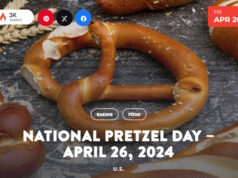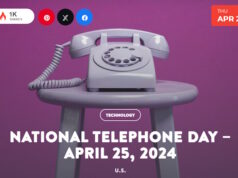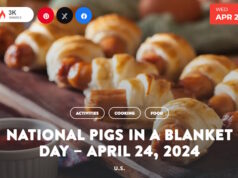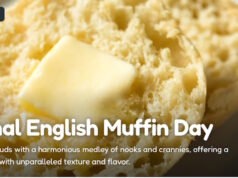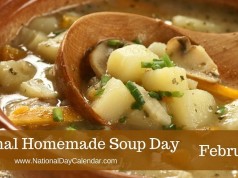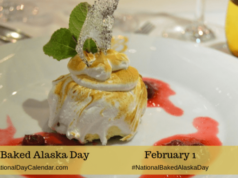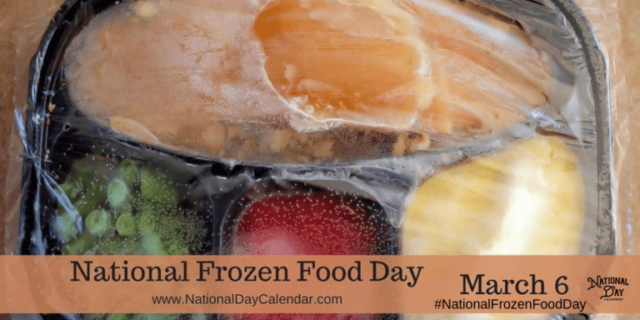
Observed annually on March 6, National Frozen Food Day has been celebrated since 1984.
Credit for the flash freezing of fruits, vegetables, meats and seafood to preserve flavor and quality is given to American inventor, entrepreneur and naturalist Clarence Frank Birdseye II.
- Food preservation by freezing had been done long before Birdseye had ever begun experimenting with the process. Birdseye discovered the key was freezing the food quickly. Flash freezing forms small ice crystals which prevent the cell walls from bursting. Large ice crystals turn the food to mush.
- Birdseye applied for a multitude of patents, but one of his earliest is from 1927 for a process to flash freeze foods. Consider that in 1930 only 8 percent of American households had refrigeration units in their homes. A frozen food patent in 1927 was a visionary step in a long chain of events to make frozen foods a marketable product.
- In 1930, the Birdseye label, owned by the General Food Corporation, began selling 26 products to 18 retails stores in and around Springfield, Massachusetts. Clarence Birdseye continued his work with General Foods Corporation.
- Frozen dinners, first known as TV dinners, came on the scene in 1954 and were introduced by Swanson. These pre-cooked meals only needed to be heated through in the oven to be ready to eat. No cooking skills were required. Pre-heat the oven, cook for the required length of time and eat.
- The invention of the microwave has also changed the types of frozen foods and just how convenient these items can be. Over the years, frozen foods have developed to meet consumer demand. A variety of family sized meals, health conscience meals and even organic meals have hit the markets in recent years.
- It is believed that first use of freezing food in industrial food sales took place in the 1800s. The story goes that a Russian company froze a small quantity of duck and geese and shipped them to London.
- The first complete frozen meal was not actually the TV dinner; it was food prepared for commercial airline flights.
- Freezer burn is the result of air hitting frozen food and allowing the ice to sublimate.
- The Celentano brothers, who owned their own Italian specialty store in New Jersey in the 1950’s, are believed to have marketed the first frozen pizza in 1957.
- Carl Paul Gottfried Linde, an engineer, scientist, and professor at the Technical University of Munich, is basically the father of frozen food. Sort of. He helped pioneer industrial cooling, through what’s commonly known as the Hampson-Linde cycle, and used his findings to plan an ice and refrigeration machine back in the 19th century.
- Linde’s desire to build such machines was only furthered in 1892, when the Guinness Brewery requested that Linde create a carbon dioxide liquefaction plant for them, pushing him still further into the arena of low temperature refrigeration and the liquefaction of air. Thanks, beer!
- Birdseye developed his technique after seeing food freezing in action in the Arctic, and noting how much better frozen fish tasted if it had been frozen immediately after been caught—like a flash!—versus food that was frozen on a delay.
- Several companies began marketing frozen meals for the masses, including One-Eyed Eskimo, Quaker State Food, and Swanson’s, which is widely hailed as the true creator of TV dinners: they coined the name and were the most well-known maker of tasty compartmentalized meals in the 1950s.
- Conagra Foods introduced its Healthy Choice line of frozen food back in 1989, after the corporation was inspired to pursue healthy frozen picks after its chairman, Charles Harper, suffered a heart attack due to his bad eating habits.
- Clarence Birdseye vegetables became so popular that they were the first commercially sold frozen vegetables in the United States. Davidson’s Market in Springfield, Massachusetts, was the first store to carry Birds Eye frozen vegetables back on March 6, 1930.
- The Chinese are known to have used ice cellars to freeze foods around 1000BC.
- The philosopher Francis Bacon is said to have died in 1626 from a chill caused by trying to freeze food by stuffing a chicken with snow.
- The Second World War gave frozen food a great boost as metals for tins were in very short supply.
- Norway and Denmark head the league of frozen food consumers with the UK also in the top five.
Sources:



